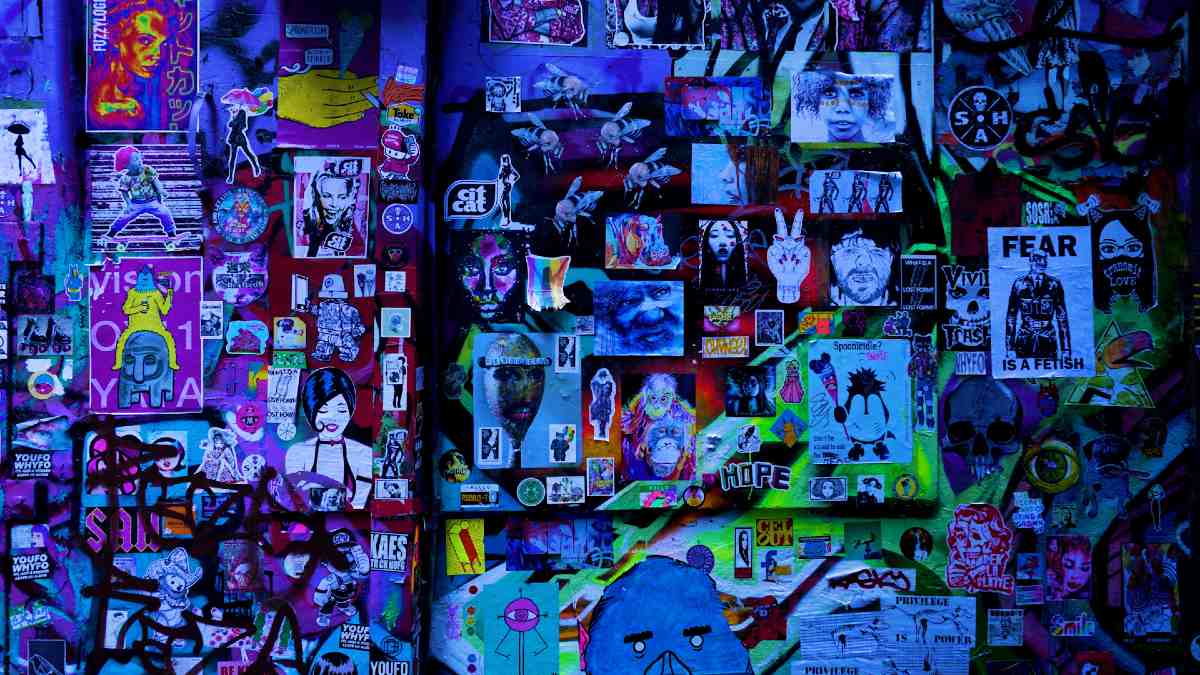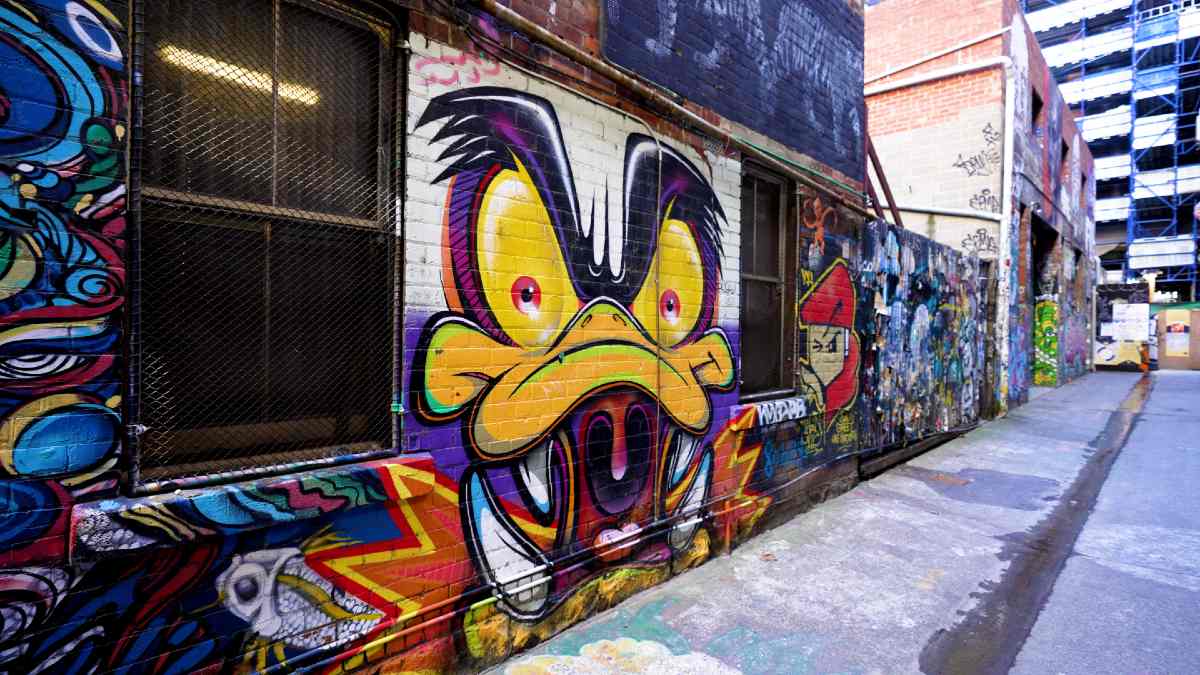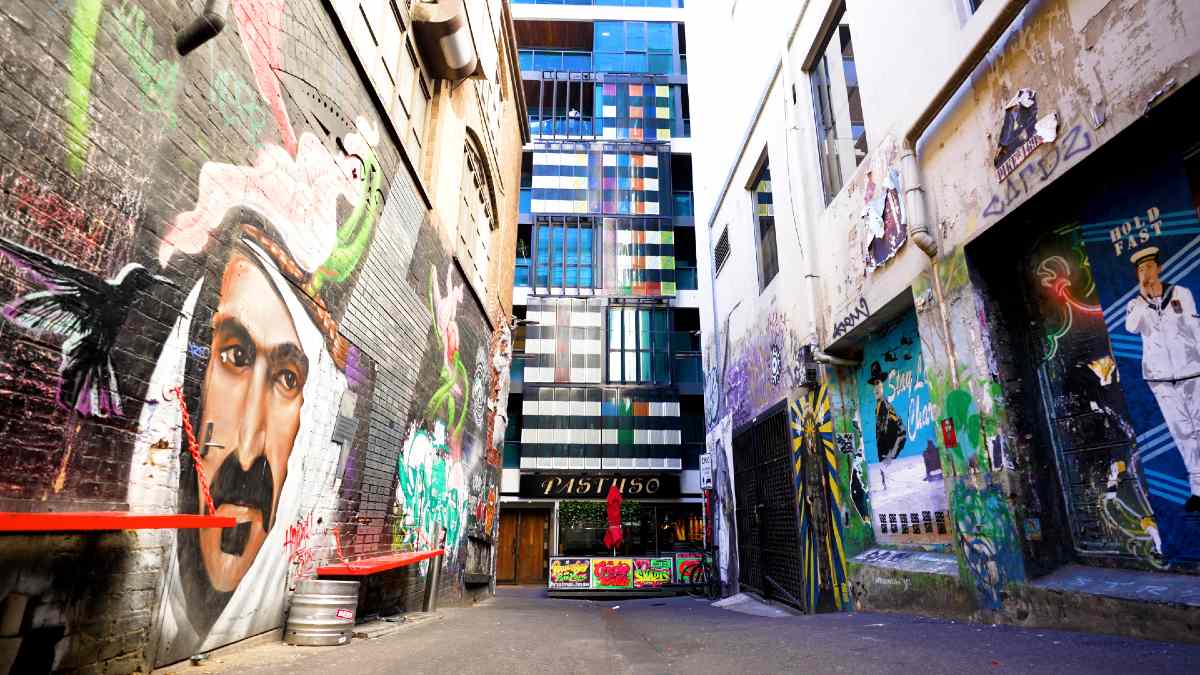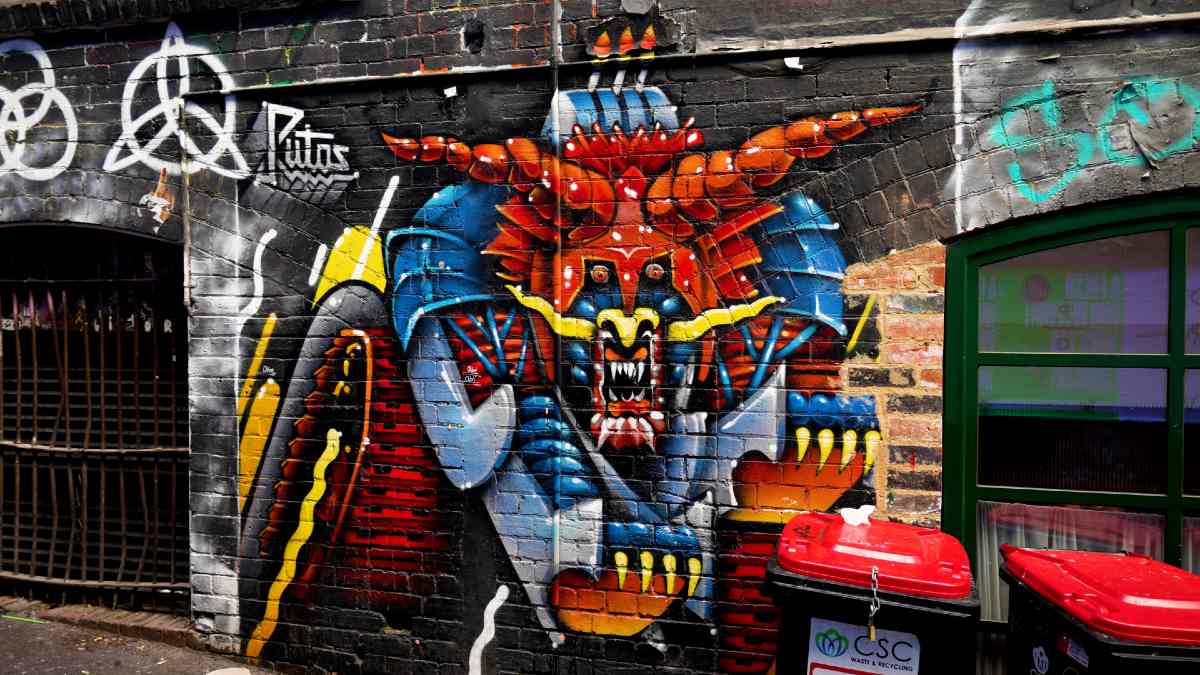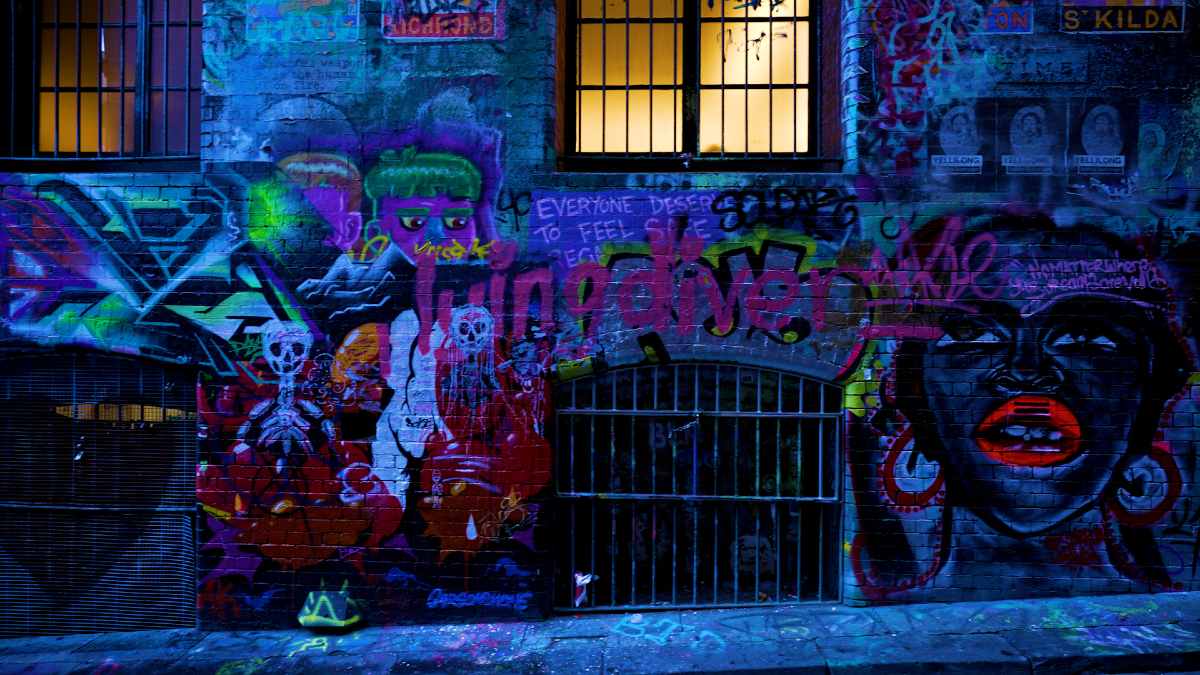A guide to the best and most budget-friendly activities to do over the summer school holidays in Melbourne and Victoria.
How Melbourne’s street art scene became world-famous
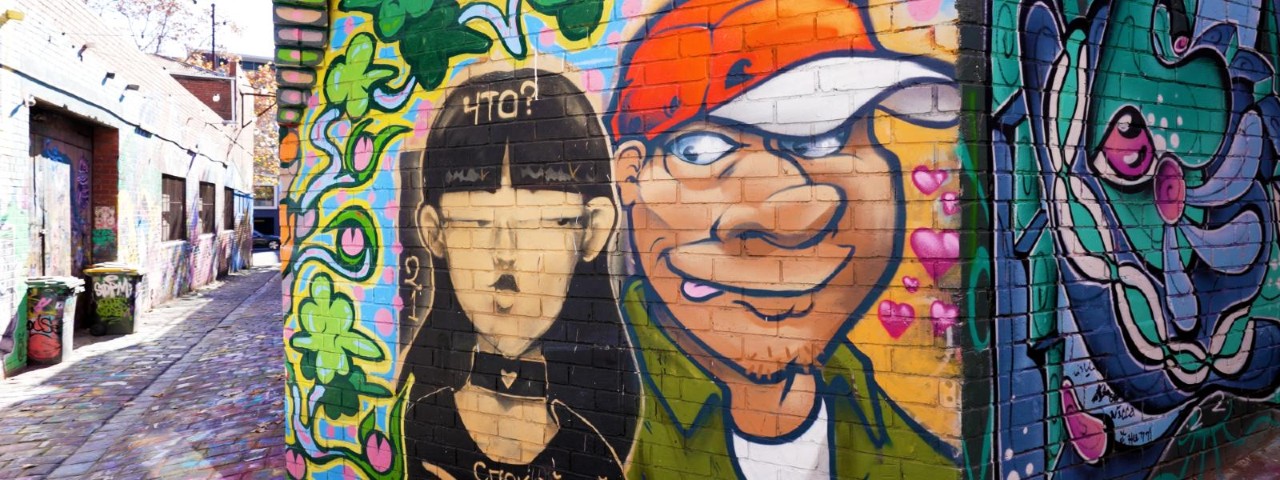
Melbourne’s street art brings in an estimated $62 million into the city every year through tourism, but the art's value to Victoria is worth so much more.
Walk into any Melbourne souvenir shop and you’ll find postcards with pictures of Flinders Street Station, trams, and dozens of images of street art.
Street art is an iconic part of Melbourne’s cultural identity, something for which the city has developed worldwide recognition. Visitors come to Melbourne to experience the cobbled bluestone lanes covered in an ever-changing array of works.
Our contemporary art has become so cool, that it’s become common for councils and businesses to engage artists for bespoke works and beautification projects – an uncouth act only a few decades ago.
But where do we draw the line between street art and graffiti?
Australia’s street art capital
According to artist and Blender Studios director, Dr Adrian Doyle, Melbourne’s street art culture is a recent phenomenon that emerged in the late 1990s.
“We didn't think of it as ‘street art’, we thought of it as an extension of our art practice,” Doyle says, explaining how many of these artists had backgrounds in fine art or graphic design, which led to often “conceptually deep” urban works.
With the scene finding its feet prior to the era of social media, Melbourne was able to curate a distinct style removed from external influences. “I think we were in an unusual spot for Melbourne to sort of create its own identity,” Doyle says.
Compared to other cities known for street art like Berlin and London, Melbourne’s aesthetic “came out of a very heavy stencil movement”, as well as a sense of camaraderie and collaboration between artists.
“It was very democratic in the way that [the artists] worked together and taught each other and shared knowledge. And I feel like that's what created the unique iconography.”
You can’t discount Melbourne’s unique geography for fostering street art either. “I think it was a mixture of the laneways being perfectly set up. I feel like they're the cultural veins of our city,” Doyle says.
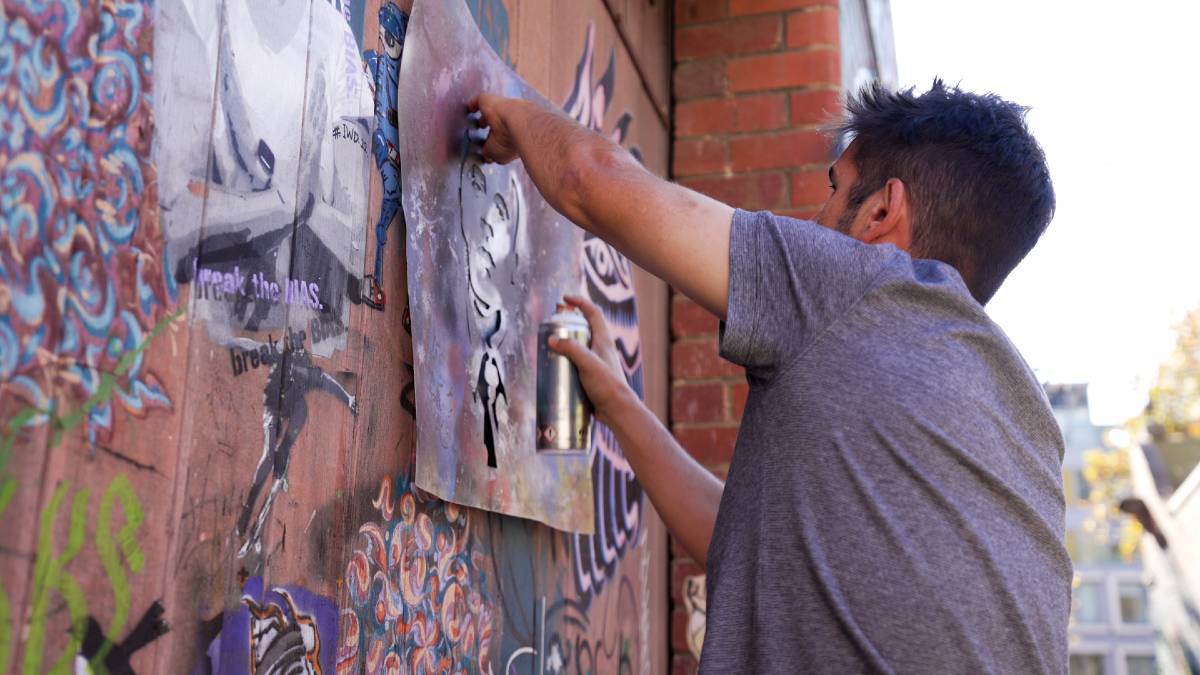
Melbourne's street art aesthetic originally came from "a very heavy stencil movement" and was quite political
Art, graffiti, or vandalism?
Distinctions between street art and graffiti vary depending on who you speak to.
For the City of Melbourne council, which encompasses some of the city’s best-known street art locations, legal street art is created ‘with the permission of whomever owns the building where the art is placed’.
Graffiti is created without permission.
Victoria Police take a similar viewpoint, stating “street art carried out with the permission of the person who owns the property the work is being done on is not a matter for Victoria Police. Appropriate permissions need to be sought from the owner of a property before anyone engages in spray painting or similar activity.”
But for Doyle, the differences are less about legality and more about culture.
“I feel like public perception… they get mixed up with graffiti and street art,” he says.
“Graffiti doesn't care about you…it doesn't really want to communicate to the community. Whereas street artists very much do.”
Street art’s economic and social boons
Doyle also runs Melbourne Street Art Tours, giving guided local street art tours led by actual artists.
Prior to the pandemic, those tours would attract around 40,000 guests every year, contributing to the $62 million industry. Hosier Lane alone he estimates, attracts 80,000 people to the city per year.
Street art’s benefits aren’t solely economic, either. Working with Melbourne councils, Doyle has provided street art-based youth work, showing young people opportunities exist no matter their circumstances.
“It is a really great way to show kids that you can have a different life,” he says.
Street art also has another, obvious, benefit. “It makes a place more beautiful, and more liveable, and more exciting,” Doyle says.
“Every city is starting to look the same. But with Melbourne, you can just walk 20 metres off the main strip, and you've got this beautiful art.”
A changing artform
Melbourne street has evolved beyond just laneway painting, with sculptures, installations, and even textile-based street art now found throughout the city.
Korean-born, Melbourne-based artist UB is one of the 80-plus creatives to recently take part in the City of Melbourne’s Flash Forward program, which aimed to reinvigorate the city and support businesses.
For the program, UB produced a colourful, interactive laneway installation inspired by shadow puppets and featuring a light show – not exactly archetypal street art.
“During the daytime people can come and use the magnets sticks to move the puppets around,” UB says. “But at night-time, you can also see the lighting which changes depending on the puppets.”
UB has lived in Melbourne for over a decade but has been aware of the city’s street art for much longer. In a nod to their international acclaim, UB says Melbourne’s laneways were made famous in South Korea s thanks to 2004 television drama, I'm Sorry, I Love You, which was partly filmed in Melbourne.
But even though her latest work can be found in an alleyway, UB doesn’t classify herself as a ‘street artist’.
“This work has happened to be on the street, and I really like it,” she says. “But I think being a street artist is something different.”
“I really think art should be around people in general. So, I think having art on the street is important.”
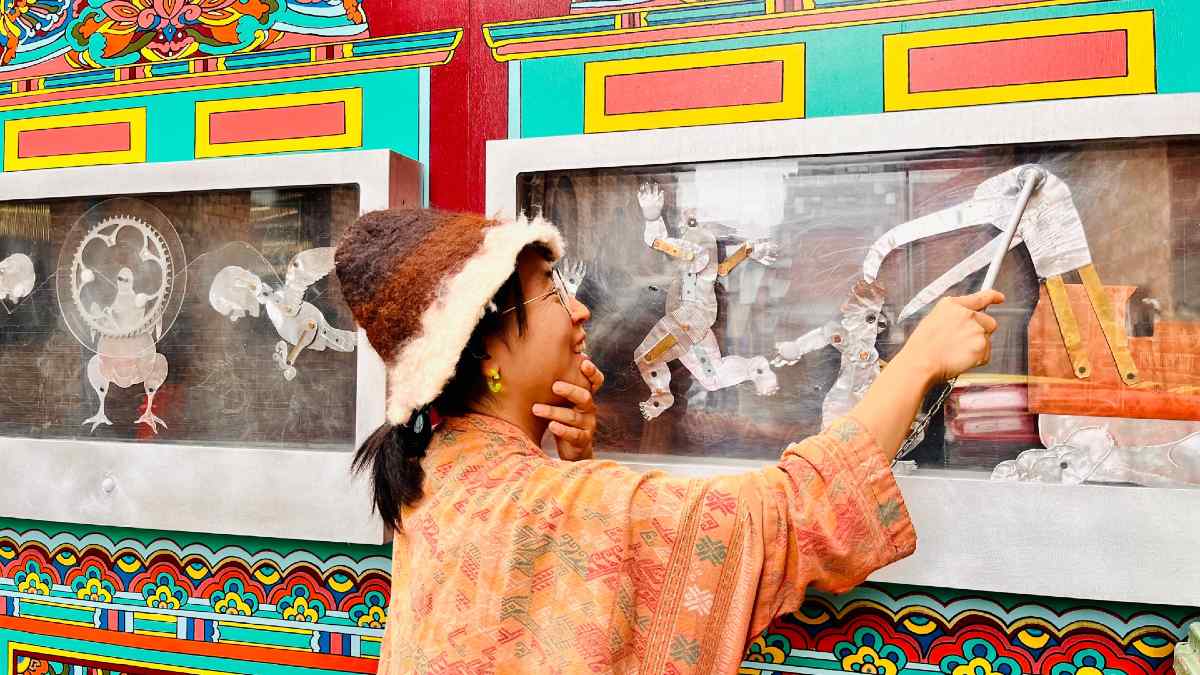
Flash forward artist UB with her artwork, 'The Birds', in George Johnson Lane in North Melbourne. Photo: Supplied
Street art goes mainstream
Flash Forward demonstrates how institutions now welcome collaboration with street artists – though they’re not without caveats.
“A corporate company will say ‘I want it to look like a Melbourne laneway’,” says Doyle. “They don't actually want it to look like a Melbourne laneway.”
According to him, what organisations and councils often want is “big, beautiful murals”. Which is fine, but that’s not truly street art, according to Doyle. “The essence of street art was about getting it up quickly and being good at your craft.”
“It was all about politics and it was all about grassroots.”
“I do feel that the politics has gone out of it.”
Melbourne’s iconic street art, he says, is under threat due to development. Having set up several laneways in the CBD for street art, Doyle says all but one now has a skyscraper next to it, and that other laneways once known for art have been destroyed to build apartments.
“The city is pretty great for street art and urban art. But it does need some kind of help.”
Where to see street art in Melbourne
Street art can be found throughout Melbourne but there are some specific locations that Doyle recommends.
Hosier Lane
“If you look up it’s still got that amazing Adnate [painting]. It’s always evolving.”
AC/DC Lane
“It's got the Banksy at the back that no one knows.”
Blender Lane and Maloney Lane (new Blender Lane)
“It's got some of the best artists in Melbourne.”
Fitzroy
“If you go out the back of Fitzroy and you just wander around, you will see some amazing [art].”
